Crocus, Saffron, Xi Hong Hua 西红花Kum Kuma (Sanskrit)Safran (Hindi) Xi Hong Hua, Fan Hong Hua (TCM) Zafrah (Unani); Qarqum (Avicenna) Kha che gur gum ཁ་ཆེ་གུར་གུམ་ (Tibetan) |

|
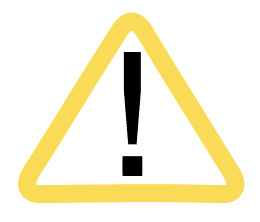
|
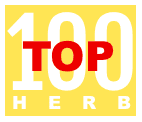
|
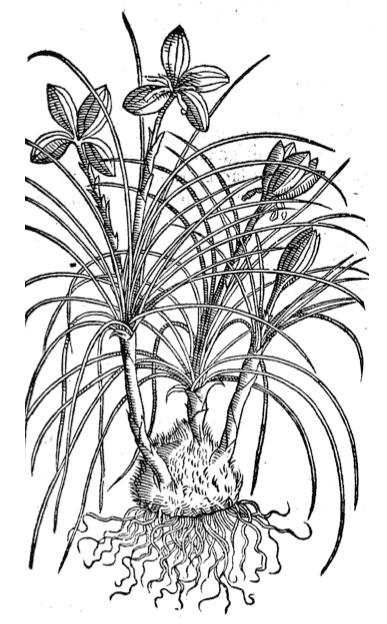 Della Materia Medicinale, Andrea Valuassori, 1562
Della Materia Medicinale, Andrea Valuassori, 1562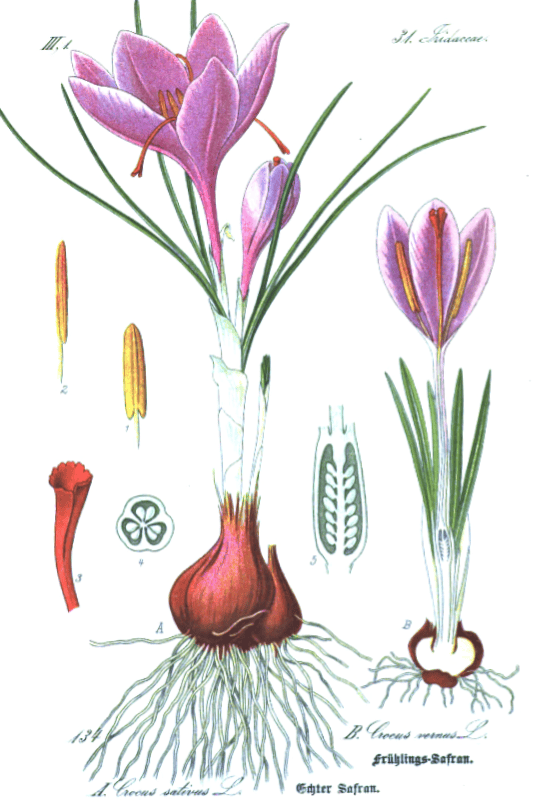 Flora von Deutschland, Kohler, 1886
Flora von Deutschland, Kohler, 1886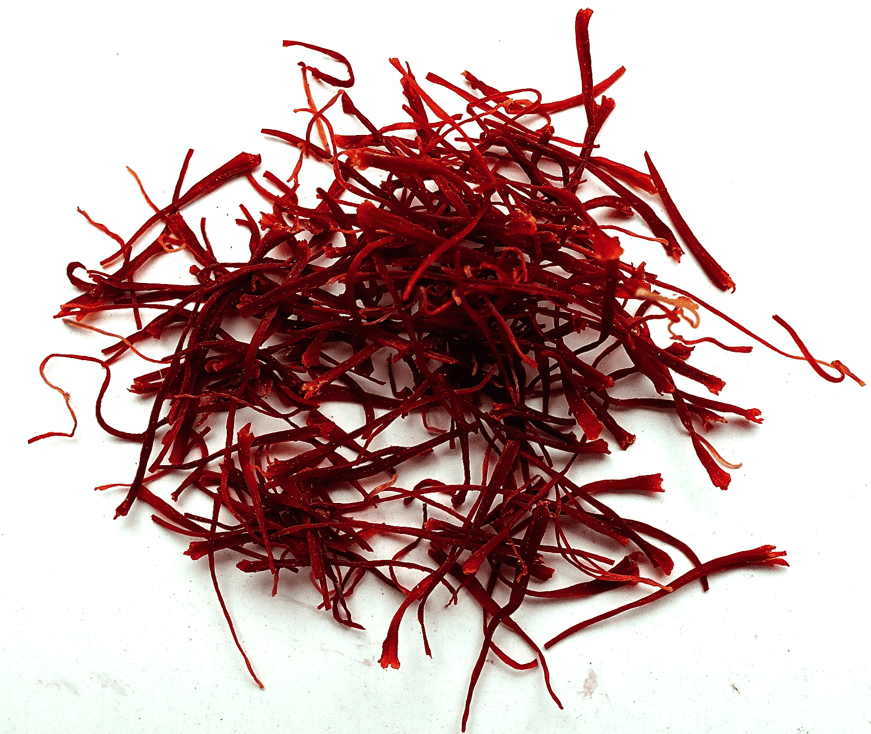 Saffron Filaments from Iran
Saffron Filaments from IranBotanical name:
Crocus sativus
In Tibetan Medicine there are several types of Gur gum:
- Kha che gur gum: Saffron (best)
- Bal po gur gum or Rtsa gur gum: Safflower (medium)
- Bod gur gum or Me tog gur gum: Calendula (inferior)
Parts used:
Stigmas
Temperature & Taste:
Moderately Warm (some sources say Cool), dry. Pungent, sweet
“Hot in the Second and Dry in the First degree”. (Avicenna)
Classifications:
2L. EMOLLIENT. 2Q. ANODYNE. 2R. NARCOTICS & HYPNOTICS. 2S. STRENGTHENING. 2V. EXPEL PUS
3C. ALEXIPHARMIC. 3D. CORDIALS & CARDIACS. 3F. LITHONTRIPTIC. 3G. EMMENAGOGUE. 3J. INCREASE SEMEN. 3I. APHRODISIAC
4c. CARDIAC. 4d. PECTORAL. 4e. STOMACHIC. 4f. SPLENETIC. 4i. UTERINE
Uses:
1. Strengthens the Heart, Benefits the Spirit:
-Heart weakness, Palpitation, Chest pain
-Syncope, Apoplexy, Hysteria
-agitation, irritability
-an important medicine for Melancholy, Depression
-“It is Exhilarant and a Heart tonic”. (Avicenna)
–‘Greatest of all Vegetable Cordials, quickens the Senses, exhilarates the Heart, Revives the Spirits, Natural, Vital, and Animal; Resists Poison, Plague and all Malign and Pestilential Fevers… Prolongs Life and Health’ (Salmon)
2. Moves the Blood, Opens Obstructions, Resolves Masses:
-Blood stagnation; fixed or chronic pain; chronic Headaches; chronic Joint pain;
-added to numerous traditional formula to promote circulation and enhance effectiveness
-Swellings, Inflammations. Avicenna said it ‘dissolves swellings’
-Tumors; has been used in Cancers
-improves complexion (Avicenna)
3. Moves the Blood, Resists Poison:
-powerfully resists and expels Poison; commonly added to Antidotes
-Plague, Epidemic diseases
-helps expression of Rashes: Measles, Small Pox
-Acne, Boils, Carbuncles
-traditionally for ‘Diseases caused by Evil Spirits’ (Tibetan Medicine)
4. Opens and Strengthens the Liver:
-Saffron (or Safflower) are regarded as the primary medicine for the Liver in Tibetan Medicine (one of the Six Excellent Medicines)
-Liver obstruction; Liver Heat
-Jaundice
5. Strengthens the Lungs:
-‘called the Soul of the Lungs’ (Schroder);
-Asthma, Breathlessness, difficulty Breathing, Consumption
–‘A special remedy for those that have consumption of the Lungs, and are … at deaths door, and almost past breathing, that it bringeth breath again, and prolongeth life’. (Gerard)
6. Strengthens the Kidneys:
-‘Promotes Lust’ (since Dioscorides); regarded as an aphrodisiac for women in Ayurveda and Unani
-Infertility, Impotence
-Kidney deficiency, Prostate disorders, Diabetes
7. Moves the Blood, Promotes Menstruation and Birth:
-benefits the Womb, promotes Menstruation and Birth
-useful for various chronic disorders of the Uterus
-“According to some physicians it is given orally to the women suffering from Labour pain to facilitate quick delivery” (Avicenna)
8. Externally:
-paste or oil of Saffron is applied to bruises, sores, rheumatic and neuralgic pain
-poultice with milk and bread crumbs softens Tumors and Abscesses
-applied to protect the eyes from Small Pox and Measles
-applied topically for chest congestion.
-used in a pessary, it is very good for Uterine pain
-topically in oils for Deafness
-used as a snuff in Tibet for chronic Rhinitis and Sinusitis
-topically for Deafness
Dose:
1. Small doses harmonise the Blood and benefit the Heart; Moderate doses move the Blood and relieve obstruction; Large doses break up Blood stagnation and relieve Pain.
2. Avicenna said taken with wine it ‘enhances the intoxication rendering the person uncontrollable’.
Dosage range: 50mg–1200mg (up to 2 grams has been used)
Correctives:
Anise; Lemon syrup; Barberry (Unani)
Substitutes:
1. Safflower (in larger dose) is an accepted substitute in Tibetan, Chinese and Unani medicine.
2. Safflower extraxct (1:5 or 1:10) can be used in an equal dose to Saffron in formula
3. Unani regards Costus and Valerian as substitutes
4. “Its equal quantity of Costus and one fourth quantity of Nard and one sixth part of Cassia barks act as substitutes for Saffron”. (Avicenna)
5. Calendula (in larger dose)
Main Combinations:
Camphor & Saffron
Peach kernel / Bitter Almond kernel & Saffron / Safflower
Saffron & Myrrh
Fever, Epidemics:
1. Fever:
i. Saffron with Camphor for Fever and Epidemic disease
ii. Burning Fever, Saffron with Rose, Tragacanth, Cucumber seed, Purslane seed, Licorice, Camphor (as in Troches of Camphor of Nicholas)
2. Children’s Fever, Saffron with Tabasheer and Bezoar (as in Powder for Childrens Fever of Tibetan Medicine)
3. To expel Small Pox and Measles, Saffron (5–10 grains) taken with Posset (hot milk curdled with alcohol). (Pemell, 1652)
4. To preserve from Infection during Epidemics:
i. Saffron with Aloe and Myrrh (as in Common Pills)
ii. Saffron with Aloe, Rhubarb, Saffron, Myrrh, Zedoary, Gentian, Agaric (as in Pills for Pestilence)
Gynecology & Obstetrics:
5. Amenorrhea, Dysmenorrhea:
i. Saffron with Cinnamon and Myrrh
ii. Saffron with Cinnamon and Amber (as in Powder to Promote Menstruation of Riverius)
iii. Saffron with Bay berry, Rosemary, Juniper berry, Cinnamon
iv. Saffron, Bdellium, Myrrh, Turmeric (Ayurveda)
v. Saffron with Cyperus, Angelica, Valerian, Madder, Mugwort, Pennyroyal, Carrot seed, Cinnamon (as in Emmenagogue Decoction of Riverius)
vi. Saffron with Cinnamon, Myrrh, Savin, Spikenard, Asarum, Rhubarb, Madder, Rue, Wormwood, Pennyroyal (as in Tincture for Suppressed Menstruation)
vii. to strongly promote Menstruation, Saffron with Aloe and Iron sulphate (as in Pills to Strongly Promote Menstruation)
viii. to strongly promote Menstruation, Saffron with Myrrh, Borax
6. To Promote Birth:
i. Saffron, Cinnamon (equal parts)
ii. Saffron (1 scruple), Cassia Wood (1 dram) (Pemell, 1652)
iii. Saffron with Cassia wood, Myrrh and Amber (as in Birth Powder)
iv. Saffron with Savin, Pennyroyal, Mugwort, Cassia Fistula, Cinnamon, Myrrh (as in Powder to Facilitate Birth of Renodeus)
v. Saffron (1 dram), Mithridate (2 scruples), dissolve in wine. (Pemell, 1652)
7. Leukorrhea, Saffron, Rhubarb (1 dram each), Venetian Turpentine (2 drams). Form 72 pills, coat with Cinnamon. Take 12 pills twice daily. (Sobernheim, 1840)
Heart & Circulation:
8. To move the Blood, clear Stasis and resolve Bruising:
i. Saffron with Dragons Blood, Myrrh, Frankincense (as in Powder to Move Blood)
ii. Saffron with Madder, Rhubarb, Asarum, Myrrh, Costus, Cinnamon (as in Powder of Madder)
iii. Saffron with Cassia wood, Indian leaf, Frankincense, Rhubarb, Amomum, Myrrh, Indian Spikenard (as in Electuary of Frankincense of Nicholas)
9. Strengthen the Heart and promote circulation:
i. Saffron with Arjuna, Boerhaavia (Ayurveda)
ii. Saffron with Rose and Myrrh (as in Troches of Saffron)
iii. Saffron with Rose, Amber, Bugloss, Balm, Cinnamon, Red Coral, Sandalwood (as in Powder to Strengthen the Heart)
iv. Saffron, Yellow Sandalwood, Red Sandalwood, Cinnamon, Clove, Lemon peel (equal parts), with Syrup of Lemon, form an Electuary. (Pharmacopoeia Hispana, 1798)
10. Anemia, Blood weakness, Saffron with Emblic Myrobalan, Withania
11. Pain from Bruising, Blood Stagnation, and chronic Pains, as a Plaster Saffron with Turpentine, Myrrh, Frankincense, Gum Ammoniac (as in Saffron Plaster)
Mind & Nerves:
12. Cold affections of the Brain; Melancholy, Vertigo, Dizziness and Heart disorders, Saffron with Galangal, Zedoary, Aloeswood, Pearl, Amber, Red Coral, Ginger and Cinnamon (as in Sweet Powder of Musk)
13. Melancholy, Saffron with Bugloss, Borage, Rosemary, Lemon peel, Quince, steep in white wine, then distill. Dose: 1–2 oz. (Pharmacopoeia Wirtembergica, 1798)
14. Nervine:
i. Saffron, Centella, Indian Spikenard (Ayurveda)
ii. Camomile (1 oz.), Orange flower (3 drams), Saffron (1 dram). Steep a heaped tablespoon in 3 cups of water to be taken over the day. (Sobernheim, 1840)
15. Agitation, Saffron with Aniseed, Rhubarb (Sobernheim, 1840)
16. Headache, Migraine:
i. from Bile and Phlegm, Saffron with Aloe, Yellow Myrobalan, Mastic, Rose (as in Pills for Headache from Bile and Phlegm)
ii. Migraine, Saffron with Chebulic Myrobalan, Yellow Myrobalan, Black Myrobalan, Mastic, prepared Aloe (as in Pills for Migraine of Galen)
iii. Strong pain of the head, Saffron, Gum Arabic, Euphorbium, Myrrh, Nutmeg (equal parts), mix with egg white and apply to the forehead and temples (Pemell, 1652)
17. Loss of Speech, Apoplexy, Saffron with Juniper, Sage, Pennyroyal (as in Tincture of Juniper Compound)
18. Poor Memory, Saffron with Calamus
Lungs:
19. Cough:
i. Saffron with Licorice, Cinnamon, Spikenard, Storax, Myrrh, Aniseed (as in Antidote Appropriate for Cough of Nicholas)
ii. spasmodic Cough in Children, Saffron with Orris, Peony root, Licorice (Sobernheim, 1840)
iii. with Myrrh, Saffron, Pine nut, Fennel seed, Aniseed, Sweet Almond, Bitter Almond, White Poppy seed (as in Pills for Cold and Moist Cough of Paulus)
iv. Myrrh, Opium (1 part), Saffron, Olibanum, Licorice extract (3 parts), form pills with Syrup of Poppy. (Pharmacopee Usuelle, Louvain, 1821)
20. Cough, Asthma, Wheezing, Chest Pain, Saffron with Storax, Frankincense, Myrrh, Licorice juice (as in Pills of Storax of Mesue)
21. Shortness of Breath, Saffron with Basil juice
22. Phthisis, Saffron 91 scruple), Musk (1 grain) taken with Wine (The Secrets of Alexis, 1615)
Other:
23. Strengthen the Stomach, Saffron with Cinnamon
24. Abdominal Cramps, Saffron with Aniseed, Valerian, Orris root, Licorice (Hufeland)
25. As a reproductive tonic, Saffron with Shatavari, Withania, Mucuna (Pemell, 1652)
26. Painful urination, Saffron with Tribulus, Licorice
27. Prostatitis, Saffron with Saw Palmetto
28. Liver heat, Hepatitis, Saffron with Orris, Rose, Rhubarb, Lacca, Cassia wood (as in Electuary of Rose of Unani)
29. Sclerosis of the Liver, Saffron with Gum Ammoniac (as in Troches Praised for Liver Hardness of Nicholas)
30. Jaundice, Saffron with Turmeric and Myrrh
31. ‘Oriental Joy Pills’: Saffron with Cannabis, Opium, Datura and Betel nut, used as an aphrodisiac.
32. To protect the eyes from Small Pox and Measles, mix with Rose Water and Woman’s Milk and apply (Pemell, 1652)
33. Deafness, mix with Bitter Almond oil and drop in the ears
Major Formulas
Tincture of Saffron
Troches of Saffron (Damocrates)
Troches of Saffron (Nicholas)
Electuary of Saffron Lesser (Diacrocon Minus) (Mesue)
Electuary of Saffron Greater (Diacrocon Majores) (Mesue)
Syrup of Sandalwood (Unani)
Elixir Vitae (Tincture of Life)
Tincture of Life (Mynsichts)
Tincture of Juniper Compound
Infusion for Jaundice (Riverius)
Decoction Against Retention of Menstruation
Emmenagogue Decoction (Riverius)
Christian Electuary (Unani)
Electuary of Reschidi (Unani)
Electuary of Rose (Unani)
Electuary of Steel (Unani)
Letificans Temperate Electuary
Medicine to Defend the Base from all Danger
Cooling Exhilarating Electuary (Unani)
Lohoch Effective for Asthma (Serapion)
Confection for Catarrh
Hiera Picra
Hiera Theodoretus
Birth Powder
Powder to Move Blood (Wirtzung)
Powder to Promote Menstruation (Riverius)
Powder to Strengthen the Heart (Wirtzung)
Powder for Melancholy (Philon)
Trauma Powder
Troches for Shortness of Breath
Troches Praised for Liver Hardness (Nicholas)
Pills Against Pestilence Magistrale
Pestilential Pills of Basil
Pills of Nishat (Unani)
Pills of Ruffus (Common Pills, or Pestilential Pills)
Pills for Headache from Bile and Phlegm
Pills to Strongly Promote Menstruation
Great Decoction 25 (Thang chen nyer lnga) (Tibetan)
Minister 3 (Tibetan)
Precious and Great Multi-Jewel Compound Pill (Rin chen mang sbyor chen mo) (Tibetan)
Precious Wish Fulfilling Jewel (Rin chen ratna bsam ‘phel) (Tibetan)
Pushyanuga Churna (Ayurveda)
Cautions:
1. Not used during pregnancy or heavy Menstruation
2. Avoid overdose.
Toxicity:
1. Toxic in overdose; 1.5 grams can be toxic.
2. Bioactivity assessment and toxicity of crocin: a comprehensive review.
Antidotes:
Cure for overdose of Saffron was said to be the same as those for Henbane (De venenis, Ramesey, 1663):
1. Goats milk
2. Water and Honey
3. Gourd or Nettle seed
4. Mustard, Radish, Onions or Garlic in Wine.
5. Long Pepper powder in drink.
6. Pistachio (Fistic) nuts.
Main Preparations used:
Diacurcuma, Tincture or Essence of Saffron, Extract, Oil of Saffron, Troches of Saffron, Plaster of Oxycrocum
1. Extract of Saffron:
i. Saffron (2 parts), Alcohol (3 parts), Water (9 parts). Digest in acovered vessel, express, remove the alcohol by slow evaporation, then reduce to the consistency of an extract. (Pharmacopoeia Hannoverana, 1819)
ii. Cover Saffron with a sufficient amount of Alcohol at a moderate heat, then decant. Add fresh alcohol and repeat, and continue repeating until the alcohol comes off colorless. Mix the tinctures together, distil two-thirds in a water-bath, and evaporate to the consistency of Honey. (Pharmacopoeia Herbipolitania, 1796)
2. Wine of Saffron:
i. Saffron (1 oz.), White Wine (16 oz.). Macerate without heat for several days, strain. (Pharmacopoeia Herbipolitania, 1796)
3. Tincture of Saffron:
i. Saffron (1 oz.), Proof Spirit (15 oz.), digest several days, filter.
ii. Saffron (1 part), Alcohol, 40% (20 parts), digest, filter.
4. Syrup of Saffron:
i. Saffron (1 oz.), Boiling Water (1 pint), White Sugar (2 ½ lbs.). Macerate the Saffron in the water for 12 hours; then filter, add the sugar, and form a syrup. The Saffron may be kept in a cloth bag and reused. (London)
5. Oil of Saffron:
i. Saffron, Calamus, Myrrh
ii. Saffron (1 oz.), Calamus, Lesser Cardamon (1 ½ oz.), White Sugar (½ pound). Olive oil (1 ½ pound). Digest 8 days, then boil until the humidity is consumed, then strain and press. (Pharmacopoeia Hispana, 1798)
iii. Saffron (½ ounce), Myrrh (2 drams), Cardamons (4 ½ drams), Olive oil (9 oz.). Digest with a gentle heat, express. (Dispensatorium medico pharmaceuticum Palatinatus, 1764)
|
‘Saffron, either as a medicine, condiment, perfume, or dye has been highly prized by mankind from a remote period, and has played an important part in the history of commerce. Under the Hebrew name Carcom, which is supposed to be the root of the word Crocus, the plant is alluded to by Solomon; and as [?], by Homer, Hippocrates, Theophrastus, and Theocritus. Virgil and Columella mention the saffron of Mount Tmolus; the latter also names that of Corycus in Cilicia, and of Sicily, both which localities are alluded to as celebrated for the drug by Dioscorides and Pliny. Saffron was an article of traffic on the Red Sea in the first century; and the author of the Periplus remarks that [?] is exported from Egypt to Southern Arabia, and from Barygaza in the gulf of Cambay. It was well known under the name kunkuma, to the earlier Hindu writers. It was cultivated at Derbend and Ispahan in Persia, and in Transoxania in the 10th century, whence it is not improbable the plant was carried to China, for according to the Chinese it came thither from the country of the Mahomedans. Chinese writers have recorded that under the Yuen dynasty (A.D. 1280-1368), it became the custom to mix Sa-fa-lang (Saffron) with food. There is evidence to show that saffron was a cultivated production of Spain as early as A.D. 961; yet it is not so mentioned, but only as an eastern drug, by St. Isidore, archbishop of Seville in the 7th century. As to France, Italy, and Germany, it is commonly said that the saffron crocus was introduced into these countries by the Crusaders. Porchaires, a French nobleman, is stated to have brought some bulbs to Avignon towards the end of the 14th century, and to have commenced the cultivation in the Comtat Venaissin, where it existed down to recent times. About the same time, the growing of saffron is said to have been introduced by the same person into the district of Gatinais, south of Paris. At that period, saffron was one of the productions of Cyprus, with which island France was then, through the princes of Lusignan, particularly related. During the middle ages, the saffron cultivated at San Gemignano in Tuscany was an important article of exportation to Genoa. That of Aquila in the Abruzzi was also famous, and used to be distinguished in price-lists till the beginning of the present century; the culture of saffron is still going on there to a small extent. The growing of saffron in Sicily, which was noticed even by Columella, is carried on to the present day, but the quantity produced is insufficient even for home consumption. In Germany and Switzerland, where a more rigorous climate must have increased the difficulties of cultivation, the production of saffron was an object of industry in many localities. The saffron crocus is said to have been introduced into England during the reign of Edward III. (A.D.1327-1377). Two centuries later English saffron was even exported to the Continent, for in a priced list of the spices sold by the apothecaries of the |
north of France, A.D. 1565-70, mention is made of three sorts of saffron, of which “Safren d’Engleterre” is the most valuable. It was evidently produced in considerable quantities, for in 1682 we find in the tariff of the “Apotheke” of Celle, Hanover, crocus austriacus optimus, and Crocus communis anglicus. In the beginning of the last century (1723-28), the cultivation of saffron was carried on in what is described by a contemporary writer as— “all that large tract of ground that lies between Saffron Walden and Cambridge, in a circle of about 10 miles diameter.” The same writer remarks that saffron was formerly grown in several other counties of England. The cultivation of the crocus about Saffron Walden, which was in full activity when Norden wrote in 1594, had ceased in 1768, and about Cambridge at nearly the same time. Yet the culture must have lingered in a few localities, for in the early part of the present century a little English saffron was still brought every year from Cambridgeshire to London, and sold as a choice drug to those who were willing to pay a high price for it. Saffron was employed in ancient times to a far greater extent than at the present day. It entered into all sorts of medicines, both internal and external; and it was in common use as a colouring and flavouring ingredient of various dishes for the table, The drug, from its inevitable costliness, has been liable to sophistication from the earliest times. Both Dioscorides and Pliny refer to the frauds practised on it, the latter remarking— “adulteratur nihil oeque.” During the middle ages the severest enactments were not only made, but were actually carried into effect, against those who were guilty of sophisticating saffron, or even of possessing the article in an adulterated state. Thus at Pisa, in A.D. 1305, the fundacarii, or keepers of the public warehouses, were required by oath and heavy penalties to denounce the owners of any falsified saffron consigned to their custody. The Pepperers of London about the same period were also held responsible to check dishonest tampering with saffron. In France, an edict of Henry II., of 18th March, 1550, recites the advantages derived from the cultivation of saffron in many parts of the kingdom, and enacts the confiscation and burning of the drug when falsified, and corporal punishment of offenders. The authorities in Germany were far more severe. A Safranschau (Saffron inspection) was established at Nuremberg in 1441, in which year 13 lb. of saffron was publicly burnt at the Schonen Brunnen in that city. In 1444, Jobst Findeker was burnt together with his adulterated saffron! And in 1456, Hans Kolbele, Lienhart Frey, and a woman, implicated in falsifying saffron, were buried alive. The Safranschau was still in vigour as late as 1591: but new regulations for the inspection of saffron were passed in 1613. There was also in the same city a Gewurzschau, or Spice-inspection, from 1441 to 1707. Similar inspections were established in most German towns during the middle ages.’ (Pharmacographia, Fluckiger & Hanbury, 1879) |
A text (in Latin) fully dedicated to the use of Saffron in Medicine.
Crocologia seu curiosa croci regis vegetabilium enucleatio, Hertodt, 1671 (e-rara)
